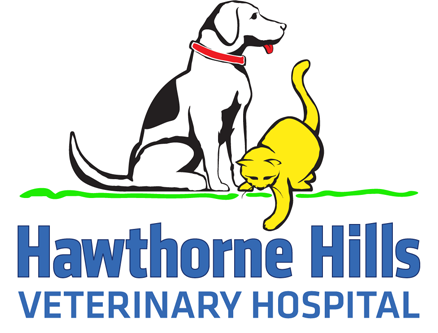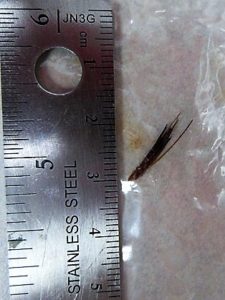
Stockton is a 3 year old Terrier Mix who loves running through the long grass. He also is a big fan of scratches behind his ears. One day when his owner was rubbing his ears, Stockton let out a yelp.
Stockton was brought into Hawthorne Hills Veterinary Hospital for examination of his ears. During his exam it was noted that his ear canals looked normal and not inflamed as would be typical of a routine bacterial or yeast infection. In his right ear there was a brown plug in the ear canal next to the ear drum. It was decided to have the owner clean his ears out daily to try and flush this plug out. The veterinarian wanted to recheck Stockton in a week.
At his recheck he was still sore and the plug was still in his right ear. In order to try and remove the plug Stockton required sedation. When working near the ear drum it is important that Stockton be very still. The ear drum is a thin membrane and is easily ruptured. Working close to the ear drum is uncomfortable and dogs will always try to shake their heads.
Once Stockton was sedated an otic exam was done and TWO plant foreign bodies were removed from his right ear canal!
What was removed were Grass Awns. These are barbed grass seeds that are common to this area. Grass Awns have backward facing barbs so once they are embedded in an area, normal movement/motion will push then forward. Since they have the barbs they cannot move backwards.
Hawthorne Hills Veterinary Hospital sees multiple cases of grass awn foreign bodies each year. They can be found in the ears like Stockton or penetrate the skin causing abscesses. In severe cases grass awns have penetrated the abdominal wall or chest wall causing serious infections inside the body! Luckily most remain outside the body cavities so this is rare.
Once the grass awns were removed from Stockton’s ear he was back to normal the next day. He did not require antibiotics but some cases do.
To prevent grass awn foreign bodies it is important to inspect your dog’s fur, feet and ears after playing in long grass. Many times people will notice grass awns on their socks or shoes. If you see this, it is important to inspect your pet to ensure they do not have any grass awns on them.





